Animus, or a Woman's Creative Power
Archetypal part of the female psyche that turns ideas into action
On the 3rd of April 2025, Headwaters 6-week long writing course begins! We will work through creative blocks and dive into authentic writing. You can find all the information about the course here. 𖦹
Without the animus, the play is created in one’s imagination, but the play is never written down and never performed. Without him the stage may be filled to bursting, but the curtains never part and the marquee remains dark.
— C. P. Estés
I must admit, writing about animus was challenging. There was a lot I wanted to synthesize. A lot of my own assumptions were debunked. It was hard to close some loops that I had opened. It felt like writing about my own back. I can’t see it, I only know that it’s there when I lean against a wall, if someone touches it, if it hurts, or if I see it in a double mirror. Elusive and contradictory.
As Jung himself admits to his own ignorance (bolded words by me):
“I have been asked to present the development of the animus in a similar way. You see, all these fragments of old philosophy— philosophy was then psychology have been made by men.
Chinese philosophy, for instance, which is really a sort of psychology, was an entirely masculine invention, because women at that time played no role in the world of men, excepting indirectly, by influence. In antiquity and in all primitive societies, "cherchez la femme" was an eternal truth, but [women] were not recognized, and when men set to work on psychological matters they overlooked the existent of women completely.
So no wonder that we have a classification of the development of the anima from a deeper source—it is more than two thousand years old and we know practically nothing about the animus, or even about the existence of an animus.
But one can speculate about the animus and really produce a similar scheme for it. Here again, however, it is a man who does it, so I beg your pardon—I mean of the female part of my audience—if I am intruding upon a field which is not entirely my own. You are quite free to suggest a different classification, so please do consider my point of view only as a proposition based upon a certain experience and spiced with more or less benevolence.”
With that in mind, let’s begin in an unexpected place.
Sulfur and Alchemy
Like most of the afternoons, I walked my daily loop around the neighborhood and the surrounding nature reserve. An unusual day for February. Sun was breaking through air, casting itself upon every living creature, bark, branch, shrivelled leaf. The orange light latched upon the breast of a forest pigeon who was beating its path through the blue sky.
I walked towards the bog onto a path that turned into a long, low-hanging wooden bridge across the marsh. I stopped at my not-so-secret place on the wooden path. A few meters in front of me was a gas passageway, bubbling onto the surface out of the sedimental depths. This time it was frozen and large air pockets were stuck in the thin sheet of ice.
On my way back, I could smell sulfur. Cold air singled out the gas particles and froze them into suspension. My eyes locked into the black water on top of the black earth, mixed with branches, dead and living trees, broken grasses, and dozens of seasons of leaves. It all was being digested. It was all illuminated by the early setting of the wintry sun.
In the ancient study of Alchemy, sulfur was seen as one of the three primes, tria prima. Three primes have extended beyond alchemy. It was the holy trinity; the existential realm of body, mind, and spirit; the physical states of matter solid, liquid, gas. In alchemy, these were the three primes with their inherent qualities:
Sulfur – the fluid connecting the High and the Low. Sulfur was used to denote the expansive force, evaporation, and dissolution. Associated with soul (Psyche), the principle of combustibility 🜍.
Mercury — the omnipresent spirit of life. Mercury was believed to transcend the liquid and solid states. The belief carried over into other areas, as mercury was thought to transcend life/death and heaven/earth. Associated with spirit (Eros), the principle of fusibility and volatility ☿.
Salt — base matter. Salt represents the contractive force, condensation, and crystallization into form. Associated with the body, and the principles of non-combustibility and non-volatility 🜔.
Carl Jung spent the third majority of his life researching, analyzing, and synthesizing alchemical texts, looking for solace and integrations for his theories into much older works of humanity. Alchemy happened to reflect the archetypal images that Jung was postulating at the time. Barbara Hannah, Jung’s student paralleled sulfur to animus.
Animus and A Woman in a Man’s World
Animus is an archetypal energy within a woman that encompasses all impressions from male-associated actions, thoughts, opinions, ideas, etc. The very first energetic charge that animus receives is from the bond between the father (or if not present, another close male figure) and the daughter. Later on, animus absorbs positive and negative aspects of our brothers, uncles, grandfathers, friends, classmates, and whatever we ingest through media and larger over-culture.
As we grow, heal, integrate aspects of self, animus also grows, develops, and spreads its roots and branches throughout the whole map of the female psyche. Its roots reach into the darkest shadows, primordial ideas and instincts. Its branches strengthen our personal climb towards self-realization.
Animus is responsible for bringing our desires, dreams, ideas, art, and creations to life. Through the lowest roots within the subconscious, it moves the waters and psychic nutrition upwards into the conscious plane of the branches, to bear the fruits.
However, if animus is left undetected, unrecognized, un-initiated into your personal psyche-land, it will run free setting fires in ancient mind-forests, disrupting delicate idea-ecosystems, tearing apart any confidence, self esteem, and action-taking capacity within.
Just like sulfur, animus can be corrosive and burning. It can either burn the house it lives in (the female psyche) or it can direct this fire towards protection and negative complex purification within a woman’s internal, as well as external existence. In alchemy, there is a distinction between contaminated sulfur, and true sulfur, which “can cleanse us from all these superfluous and destructive malformations and diseases.”
In Women Who Run with the Wolves, C.P. Estés writes about positive, healthy animus as the part of the female psyche that “knows the way of the land”. He is the messenger in between layers of our interior. He is the part of us that has an overview of our deeper desires, our ideas, our plans, our authentic truth. She expands:
“This figure often has wondrous capabilities that cause him to rise to the work as bringer or bridger. He is like a merchant of soul. He imports and exports knowledge and products. He chooses the best of what is offered, arranges the best price, supervises the integrity of exchanges, follows up, follows through.”
— C. P. Estés
Similarly, the alchemists even say that sulfur, in fact, knows everything, that it is the source of illumination and of all knowledge as it burns and corrodes what is untrue. True sulfur drives out the destructive superfluities.
“Absolute knowledge is considered to be a type of "knowledge" or "luminosity" inherent in the unconscious and accessible, for instance, through intuition, dreams, visions, foresight, and synchronistic phenomenon. It is not a knowledge mediated by the sense organs or by the ego, but rather a self-subsistent, inborn, “unconscious” knowledge <..>.”
— Barbara Hannah
Negative animus acts like a pollutant of any effort directed at making your life your own. A great way to detect negative animus is to look at the internalized aspects of patriarchy.
Are you made to desire things your soul doesn’t really want?
In my personal life, I believe my negative animus took over when I started believing that my true worth as a woman would be achieved when I could make it in a man’s world. I did not think about it consciously. But my action (animus) spoke loud and clear. I was very much passionate about humane technology and affective computing at the time, I wanted to become a designer or an engineer. I even applied to AI master’s program in Zürich (thank God I didn’t get in — my BSc was in Psychology and I didn’t have the maths — I wouldn’t have met the love of my life). I wanted to earn a lot, I wanted to be seen just as smart, I wanted to be part of that club of people who can create something valuable, interesting, needed, and most importantly, I wanted to be cool. Not to say that these ambitions are wrong. They just didn’t come from a place in which I felt at ease, or in my element. Thus, we arrive at this point:
The negative, unexamined animus will convince you that your innate qualities, desires, capabilities, and talents are worthless, and you should strive to be more like the guys (the only valued individuals in our society).
However, the paradox of the integrated animus is that it will support whatever authentic feminine expression exists within you. It will protect you from more predatory aspects of the psyche and internalized oppression, alerting and directing your attention to its negative counterparts. It’s part of the instinctual nature, observant, boundaried, and action-taking.
Since my early years, I just loved writing and have been obsessed with psychology, spirituality, mysticism, art. I never fully rejected these aspects, but I never fully embraced them with confidence. I believe that’s the part that has slowed me down in my “career-seeking”. I had to re-examine the values that were not mine.
Many women are still dealing with this predicament. And I wonder how many more are awakening out of this bad dream we were worlded into. Unless our fathers, fully supported our mothers (and us), and our mothers truly did what they wanted to do with their unique essences, it’s pretty hard to understand our authentic desires.
This is why I see the work with our very personal animus so important.
After 5000 years of patriarchal domination in the West, we are still in the very thick of it. And as ancient as our psyches are, they are also adaptive. Each generation of the motherline carries new information about the times we are in. The animus, our inner guide in the outer world, shape-shifts along these times.
Something tells me that each of our animus, has been inherited through the motherline, getting a new upgrade with every prime paternal figure we meet as we emerge out of the womb. Animus learns about the plateaus of our cultures and adapts to them. Yet in its true nature, animus carries an undying desire to serve whatever authentic essence we have come with into this world.
Eros and Psyche
When I first started writing this essay, I thought that a good lens to look at the animus would be through the lens of Eros and Psyche.
However, very soon I realized that Eros is not a typical hero. In fact, he isn’t one. He is a winged, obscure and almost invisible being. Plato called animus a daimon, a creature not divine, nor human form. But, what confused me the most, is that in the myth, Eros in the myth is personified as a man.
In alchemy and in Jungian studies (much later than Greek era), Eros (as a concept, not as a mythic creature) is seen as a feminine archetype. Hence, Eros is in a way, an opposite to animus. In the Jungian view, it’s only the Eros that can actually unite the opposites, a force that is asking for integration of the opposites, a union, and psychic relatability. As his student, Barbara Hannah writes:
“We cannot unite the opposites without Eros, and moreover it is only she who can tame the wild beasts in us. As many of you know from experience, certainly for women, it is only love that can give us the incentive to tame our wild beasts, not only our personal rages and desires, but also the tendency to turn away from the light of the opposites in the individual and let ourselves be possessed by mass mindedness.”
This duality, this convergence of myth, and later symbolism of Eros might point us toward a non-dual nature of love (something worthwhile to ponder as we celebrate love this month).
In older mythology, Eros was also known as Phanes, a primordial god who emerged out of an Orphic egg, with a serpent coiled around it. Only in later years Eros was said to be a wistful son of Aphrodite (Venus) and Zeus.
The symbol of the serpent always points us to the Old Europe. In the Neolithic times, the serpent was revered as an embodiment of the Great Goddess. We can see that in one of the surviving myths about the Serpent Queen (Lithuanian), who falls in love with and marries a sea serpent, only for him to be scythed by her hateful brothers later.
But for the sake of this essay, I’d like to give myself permission and imagine the mythical Eros as animus.
In the myth of Psyche and Eros, Eros is ordered by his mother Aphrodite to make Psyche fall in love with a beast, as vengeance for Psyche being more beautiful and even more worshiped for her beauty than Aphrodite. But Eros himself falls in love with Psyche, and with a bit of oracular intervention, Psyche ends up being married to Eros, unaware of his true appearance, denied of seeing him in full light. Only at night, they can be near each other, sharing an invisible bond. However, Psyche is encouraged by her jealous sisters to reveal the true image of her lover. He might as well be a serpentine monster, as the oracle once saw in his visions, and Psyche, in her own right, should once and for all know that. One night, when Eros is plunged into a deep sleep, Psyche brings an oil lamp to illuminate him. What she saw was not a monster, but a handsome winged being. The regret and joy mixed in her chest and by an accident, she spilled a drop of oil onto Eros. He awoke in great derangement, wallowing Psyche’s broken promise to never reveal his true nature. He left her alone in their palace of invisible things, and fled where she could not find him. Through her sullen wanderings, Psyche reached Aphrodite herself, who presented four trials for Psyche, if she is ever to see Eros again.

The initiation that Psyche goes through reminds me of the initiation of Vasilisa, who has to separate poppy seeds, lentils, and corn in Baba Yaga’s hut. When Psyche is told to hold onto her piece of bread, she meets Cerberus, a three-headed dog. By giving the beast some bread, Psyche manages to come through into Hades’ realm. It reminds me of Inanna who must abandon all her Mes at each gate of the underworld.
But one of the tasks pulled my attention more than the others. The fourth trial asked Psyche to fetch the dark Stygian water from the river Styx, which emerged out of distant mountain tops, circling around Hade’s territories. In Greek mythology, Styx is a river and also a goddess of the underworld. It is the river, in which the dead are ferried across from one shore to another by the boatman (psychopomp) Charon. A mythological river between the living world, and the one of death carries throughout many world mythologies. Water is a portal, a purifier, an eternal carrier into and out of life.
“the famous cold water ... trickles down from a high and beetling rock. Far under the wide-pathed earth a branch of Oceanus flows through the dark night out of the holy stream, and a tenth part of his water is allotted to her.”
This song instantly comes to my mind when I read about Styx.
And so, Psyche is aided by the eagle of Zeus, an oracular spirit bird. The eagle remembers that he owes Eros a favor, so he dives in to grab the flask out of Psyche’s hands. He fetches the dark water from Styx, dodging the never sleeping dragons, ordained to protect the river.
“Do you really expect to be able to steal, or even touch, a single drop from that holiest— and cruelest — of springs? Even the gods and Jupiter himself are frightened of these Stygian waters. You must know that, at least by hearsay, and that, as you swear by the powers of the gods, so the gods always swear by the majesty of the Styx.”
I feel a wink incoming from
. In her latest course When Women Were Land (Advaya), she explored ancient Minoan civilization, and its devotion to female-bird beings, in great detail. Perhaps, the eagle of Zeus was an echo from the bird goddesses. Perhaps, we can say that Psyche was helped by her foremothers, a matrilineal spirit taking flight, looking over with a vicious eye, predating the predators herself. She who has been close to the river, who has crossed the river of life and death, to and fro many times.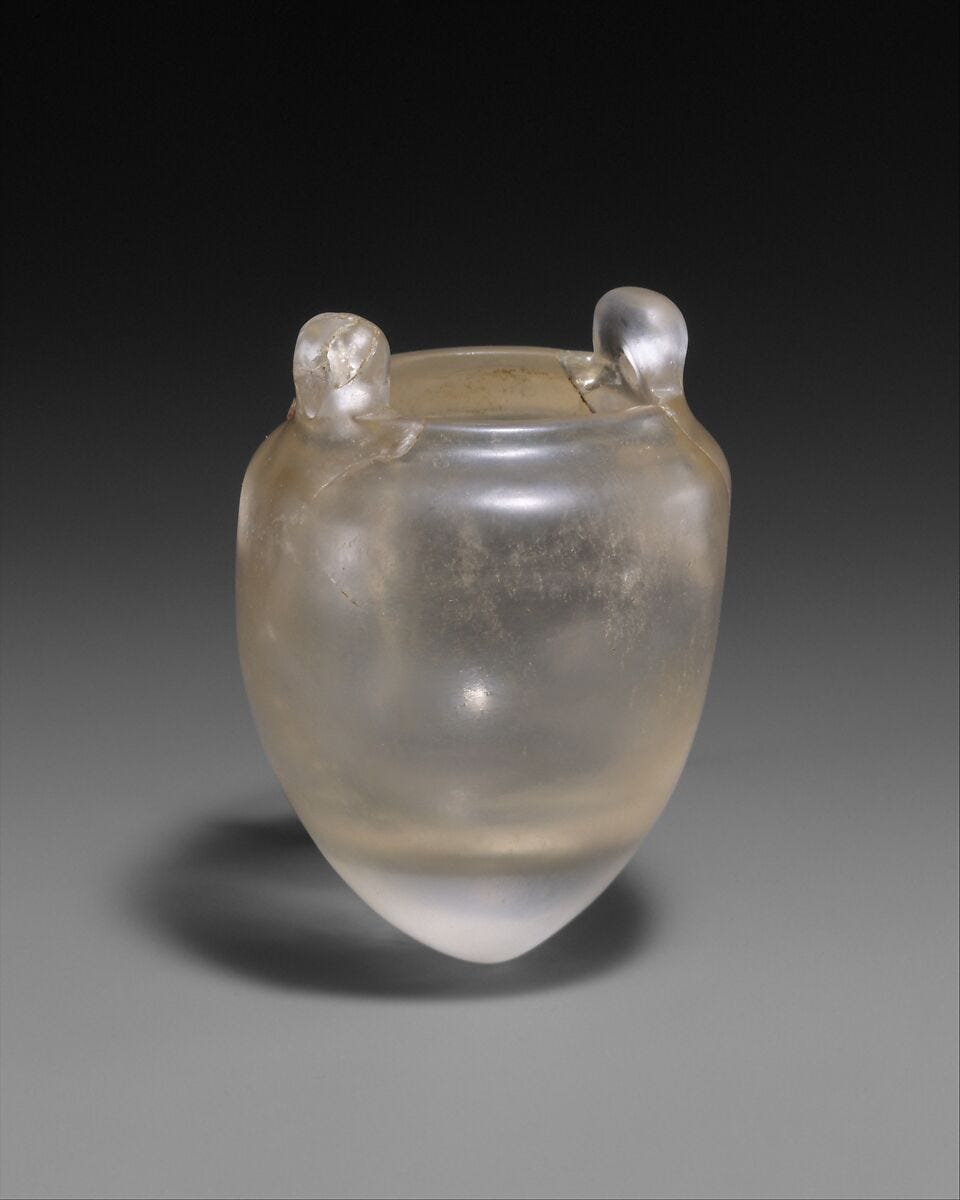
Even if at face value interpretation of this myth follows the integration of Psyche as Soul, Eros as Love, I believe that Psyche’s trials also point us towards Animus integration within the femme interior.
You can only have a relationship in darkness for so long. The desire to illuminate and see an aspect of yourself that belongs to your own primary soul’s color palette is deeply natural, even if encouraged by more shadowy aspects (sisters).
These trials mature Psyche into her capacity to meet her counterpart in full light, in an official union. But, she doesn’t get there alone. She is aided by the myriad of mythical creatures, instinctual helpers who understand each ecological region they inhabit.
For women, this means developing a healthy relationship with the part of us that can be truly helpful in the outward manifestation of our authentic life force, as well as our creative lives. This means our ancient souls can be resourced and supported by the animus, who knows how to navigate and find a way out of the contemporary patriarchal jungle while protecting the heart of our essence.
I hope you enjoyed this essay and I want to share so much more with you! If you are curious and would like to learn more about animus and how you can create a meaningful and transformative aspect of self, here are two ways to go deeper:
In April, I’ll be opening doors to Headwaters 6-week writing course once again. If you feel called or just curious to learn more, head here and join the course. We have the whole week about animus integration there, where we cover discipline, structure, and putting out your writing into the world.
- and I am crafting the Animus Guide for Women Artists, Writers, and Creatives. This will be a self-paced, comprehensive, beautifully illustrated guide for those who want to transform their creative capacity and renegotiate the relationship with the animus in their soul’s work. We are still in the early creative process, but will keep everyone updated! Join the waitlist here.
Much love to you,
Rūta X

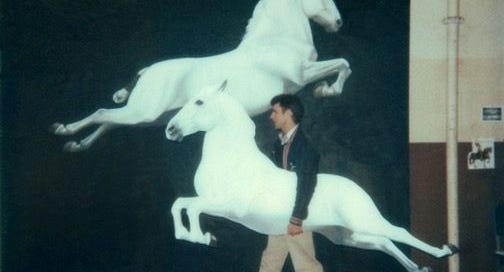




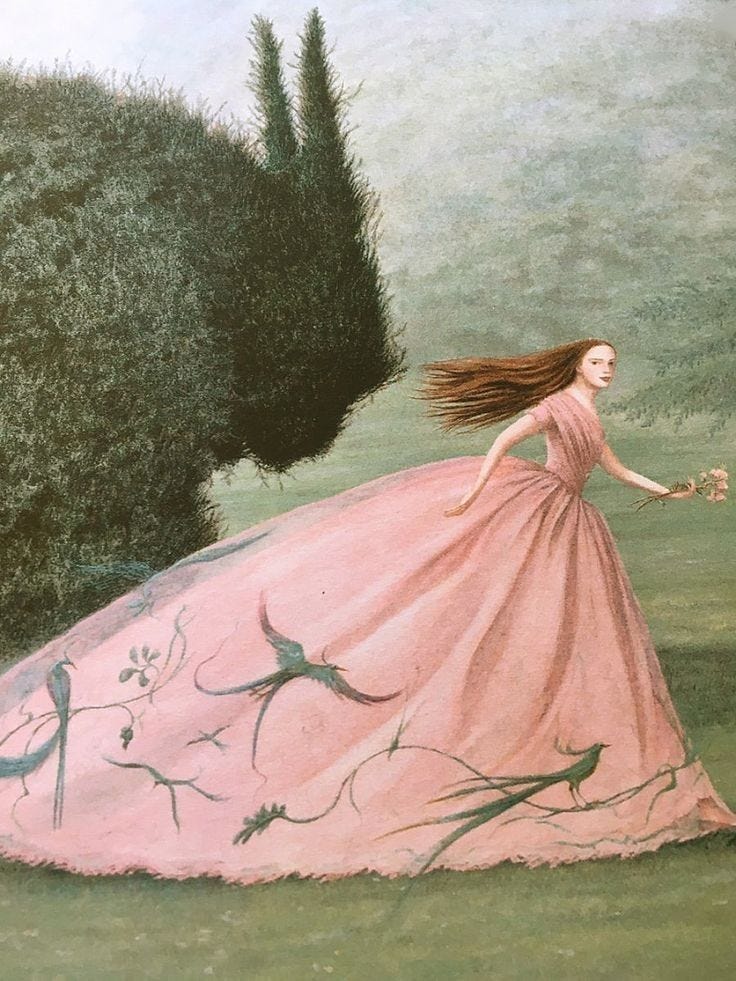
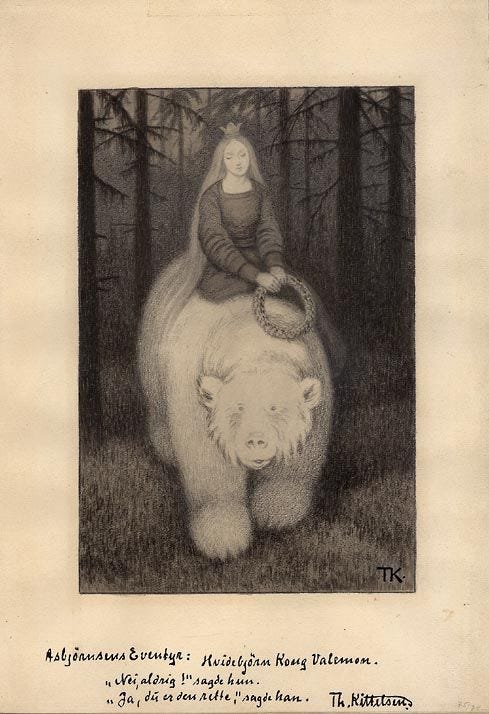


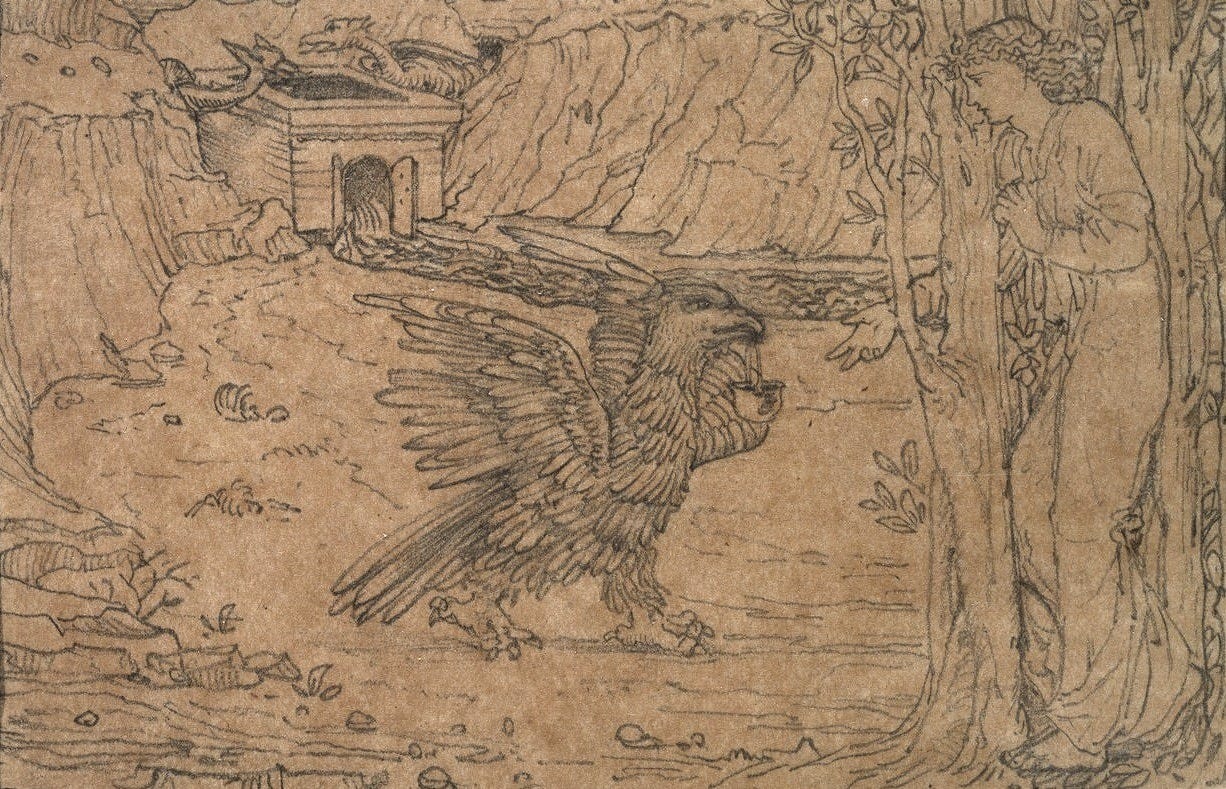
Absolutely loved this essay! So many threads, so many alignments with my own trains of thoughts! Beautiful!
Loved this Essay. Could read many more on this subject! Thank you for your inights